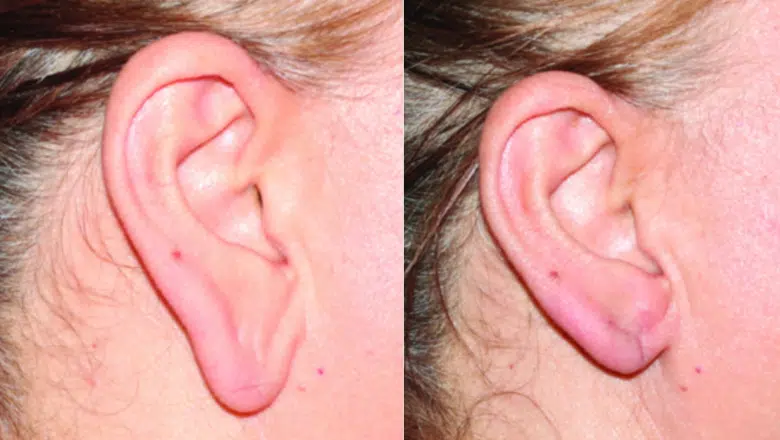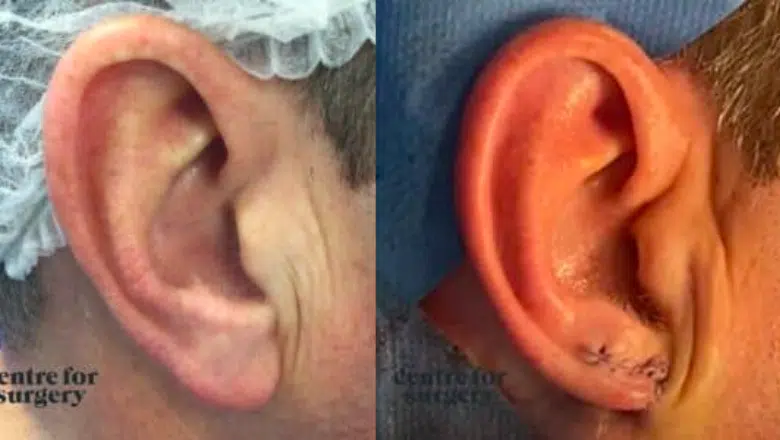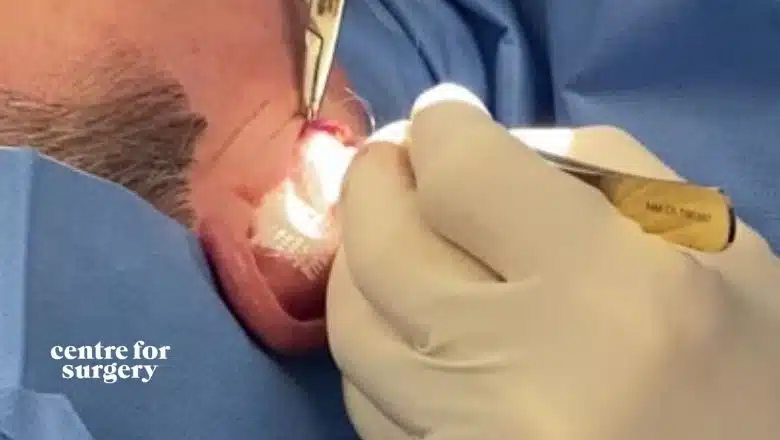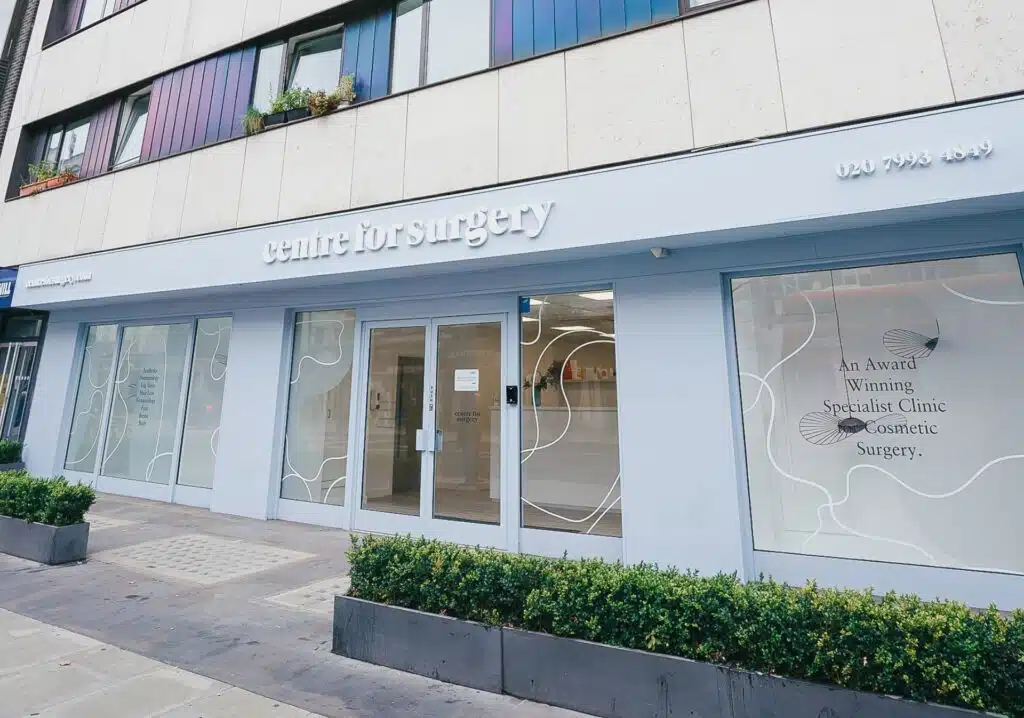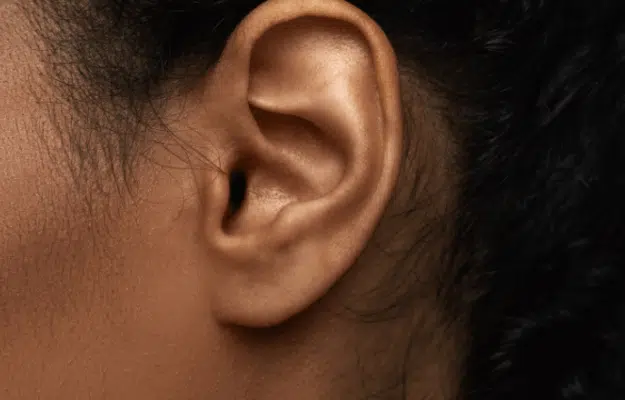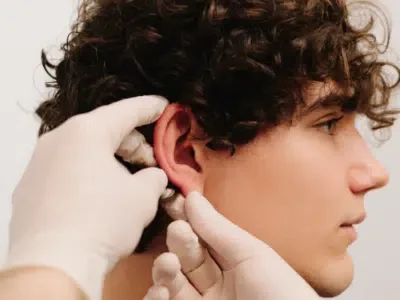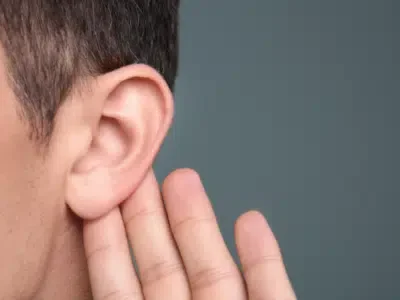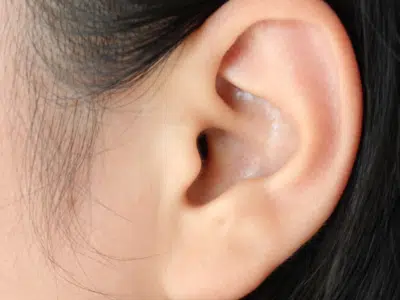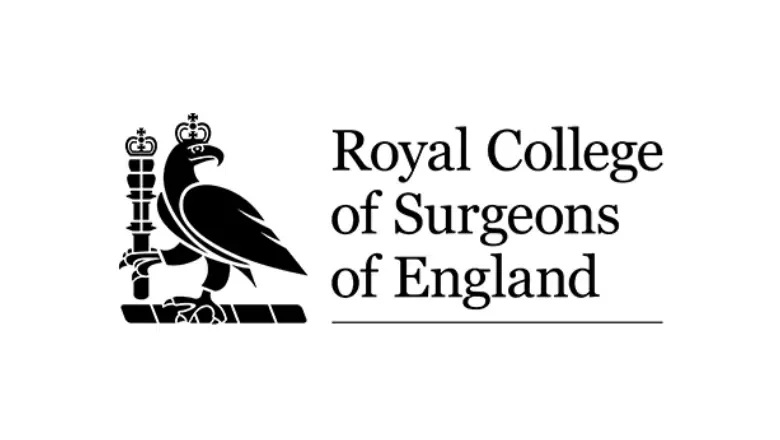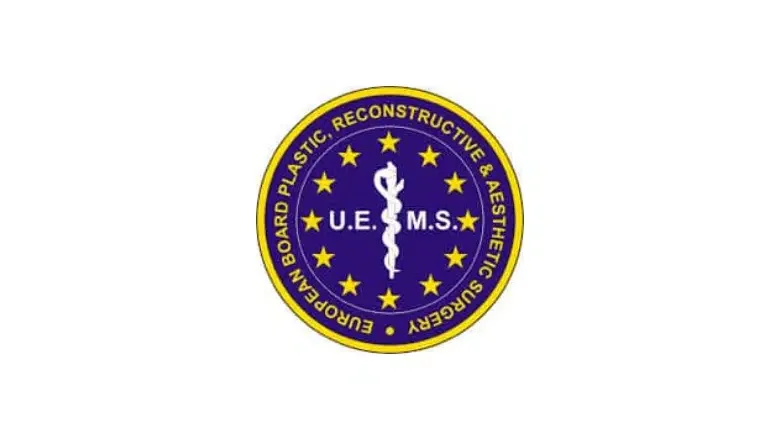Earlobe Reduction London UK
Achieve a balanced, aesthetically pleasing appearance with our earlobe reduction surgery – a quick and effective solution for resizing and reshaping elongated or oversized earlobes
The size and shape of the ears play a key role in the overall balance of one’s facial features. Excessively long earlobes may contribute to a person looking much older than they actually are. Long earlobes may also have a dragging effect on the face which can negatively influence the impression of youthfulness. Whilst genetic factors may contribute to the appearance of excessively large earlobes, earlobes may also stretch under the influence of heavy jewellery or traumatic injury. At Centre for Surgery, our surgeons are experienced in the full range of ear surgery, including otoplasty or ear pinning surgery for the correction of overly prominent ears, split earlobe repair and earlobe reduction surgery. If the appearance of your excessively large earlobes bothers you, earlobe reduction or earlobe lift is a highly effective treatment to permanently reduce the size of the earlobes with a quick and straightforward surgical procedure.
What Causes Large Earlobes?
Large earlobes can be attributed to a variety of factors, which may be genetic, environmental, or related to lifestyle choices. Some of the common causes of large earlobes include:
Genetics
One of the primary factors influencing earlobe size and shape is genetics. If one or both parents have large earlobes, there is a higher likelihood that their offspring will inherit this trait as well.
Ageing
As people age, the skin and soft tissues of the body lose their elasticity and firmness due to a decrease in collagen and elastin production. This natural ageing process can cause earlobes to sag, stretch, and appear larger or elongated over time.
Heavy earrings
Wearing heavy earrings or large gauges can put constant pressure and weight on the earlobes, causing them to stretch and become elongated over time. This effect can be more pronounced with prolonged use of heavy earrings or if the earrings are caught and pulled on accidentally.
Trauma or injury
In some cases, an injury or trauma to the earlobe, such as a tear or split caused by an earring being pulled or snagged, can result in an irregular or enlarged appearance.
Cultural practices
Certain cultural practices involve earlobe stretching or elongation as a form of body modification. This is typically done by gradually increasing the size of inserted jewellery or weights over time, resulting in intentionally large or elongated earlobes.
Medical conditions
Although rare, some medical conditions or syndromes may cause the earlobes to appear larger than normal. For example, individuals with Pendred syndrome, a genetic disorder that affects hearing and thyroid function, may have larger and thicker earlobes as one of the associated physical features.
While large earlobes may not pose any health risks, they can be a source of self-consciousness or dissatisfaction for some individuals, leading them to seek earlobe reduction or reshaping procedures for cosmetic reasons.
What is Earlobe Reduction?
Earlobe reduction, also known as loboplasty or earlobe reshaping, is a cosmetic procedure that aims to address concerns related to oversized, stretched, or elongated earlobes. These issues may arise due to genetics, ageing, or wearing heavy earrings over time, which can cause the earlobes to lose their shape and elasticity.
The earlobe reduction procedure focuses on resizing and reshaping the earlobes to achieve a more proportionate and aesthetically pleasing appearance, enhancing overall facial harmony. By addressing these concerns, earlobe reduction can help boost an individual’s self-esteem and confidence, as well as make it easier to wear earrings comfortably.
Earlobe reduction Before & After

Benefits of Earlobe Reduction
Earlobe reduction surgery, a specialised procedure in cosmetic surgery, offers a range of benefits for individuals seeking to enhance the appearance of their earlobes. This surgery is particularly beneficial for those who have experienced stretching or elongation of the earlobes due to ageing, wearing heavy earrings, or other factors.
One of the primary advantages of this procedure is its ability to restore a more youthful and balanced look to the earlobes. Over time, earlobes can lose their elasticity and begin to droop, which can affect the overall facial appearance. Earlobe reduction surgery addresses this issue effectively, helping to reinstate a more youthful contour to the earlobes and, by extension, the face.
Another significant benefit is the boost in self-confidence that often accompanies this procedure. Many people feel self-conscious about the size or shape of their earlobes, and this can affect their choice of hairstyles and accessories. Post-surgery, individuals typically experience a newfound sense of confidence, feeling more comfortable and at ease with their appearance.
The surgery offers a relatively quick and straightforward solution with minimal downtime. Unlike some other cosmetic procedures, earlobe reduction is usually performed under local anaesthesia and takes a short time to complete. The recovery period is typically brief, with most patients able to resume their normal activities shortly after the surgery.
Additionally, this procedure can also improve the comfort and fit of earrings. For individuals who have stretched or elongated earlobes, earrings may not sit properly, which can be both uncomfortable and unappealing. After surgery, earrings can fit more securely and comfortably, enhancing the overall experience of wearing jewellery.
Notably, the results of earlobe reduction surgery are generally long-lasting. While no cosmetic procedure can stop the natural ageing process, the outcomes of this surgery can endure for many years, improving the appearance of the earlobes.
Am I suitable for earlobe reduction?
Ideal candidates for earlobe reduction include both women and men who are concerned about the appearance of prominent or overly long earlobes and are keen to improve their cosmetic appearance. Earlobe reduction surgery is ideal for stretched ear lobes, excessively long earlobes and correction of a pixie ear deformity from previous facelift surgery. Pixie ears are used to describe earlobes that have excessive attachments to the side of the head and may also be related to genetics.
Patients considering earlobe reduction should be in overall good health with no significant medical conditions such as uncontrolled diabetes or severe hypertension. It is important to have realistic expectations of what can be achieved with earlobe surgery. As part of the consultation, your surgeon will perform precise measurements of your ears and earlobes to determine the appropriate technique for reducing the size of large earlobes. The position of the incisions will be shown to you to give an idea of where the final scar placement will be.
If you are looking to repair your ear after a tribal earlobe piercing, read more here.
What does earlobe reduction involve?
Earlobe reduction is a minor surgical procedure most commonly carried out as an outpatient at our Baker Street clinic in central London. Once you are lying comfortably on the treatment couch, the surgeon will clean and drape the area to maintain sterility. An injection of local anaesthetic will then be used to numb the earlobes. Once the surgeon has precisely measured the amount of tissue needed for removal, the incision will be made.
Several surgical techniques can be employed for earlobe reduction, depending on the patient’s specific needs and the surgeon’s expertise. The primary goal is to resize and reshape the earlobe to achieve a more proportionate and aesthetically pleasing appearance. Some common techniques used in earlobe reduction surgery include:
Wedge excision
In this technique, the surgeon removes a wedge-shaped section of tissue from the earlobe, typically from the lower or middle part of the earlobe. Once the excess tissue is removed, the remaining edges are sutured together, resulting in a smaller, more proportionate earlobe.
“Z-plasty” or “W-plasty”
These techniques involve making a series of zigzag or wavy incisions along the edge of the earlobe. This method allows for better distribution of tension along the incision line, which can help minimize scarring and create a more natural appearance.
“V-plasty” or “V-Y plasty”
This technique involves removing a V-shaped section of tissue from the earlobe and then suturing the remaining tissue in a Y-shaped pattern. This approach can be useful for correcting elongated or stretched earlobes, as it helps to lift and shorten the earlobe while minimizing visible scarring.
Crescent excision
A crescent-shaped section of tissue is removed from the lower part of the earlobe, followed by suturing the remaining edges together. This technique can be used to address both the size and shape of the earlobe and can help create a more rounded, youthful appearance.
The choice of technique depends on factors such as the patient’s earlobe size, shape, and skin quality, as well as the surgeon’s experience and preferences.
The incisions for earlobe reduction are most commonly placed in the crease between the face and the ear lobe or at the lowermost part of the ear lobe to ensure any scars are barely noticeable. Once the desired amount of tissue has been removed and the earlobes have been checked for symmetry, the incisions will be closed using dissolvable stitches. A sterile dressing will then be applied. You will be reviewed by a postoperative nurse one week after your procedure. At this appointment, the incision sites will be reviewed to ensure healing is progressing smoothly. There is little or no downtime after earlobe reduction surgery, and patients can return to their everyday activities immediately after the procedure.
Recovery after Earlobe Reduction Surgery
Recovery following earlobe reduction surgery is typically straightforward and swift, making it a convenient choice for those looking to enhance the appearance of their earlobes. The procedure, known for its minimal invasiveness, allows for a quick return to daily activities, which is a significant advantage for patients.
Immediately after the surgery, patients can expect some degree of swelling and redness around the treated area. These symptoms are normal and generally subside within a few days. It’s essential to follow the surgeon’s advice on post-operative care to ensure a smooth recovery. This usually includes keeping the area clean, applying prescribed ointments, and possibly taking over-the-counter pain medication to manage any discomfort.
One of the key aspects of recovery is the minimal downtime involved. Unlike more invasive cosmetic surgeries, earlobe reduction allows patients to return to their routine activities relatively quickly. In most cases, patients can resume work and light activities within a day or two post-surgery, provided they avoid strenuous activities and direct pressure on the earlobes.
In terms of healing, the earlobes typically recover rapidly. Any stitches used during the procedure are usually removed or dissolve within a week, and the final results become visible as the swelling completely subsides. It’s important to note that while the earlobes heal quickly, complete internal healing might take a bit longer, and it’s advised to follow any specific instructions regarding care during this period.
Patients are often advised to avoid wearing heavy earrings or engaging in activities that might stress the earlobes for a certain period post-surgery. This precaution helps in preventing any complications and ensures optimal healing of the earlobes. The exact duration for avoiding such activities will depend on the individual’s healing process and the surgeon’s guidance.
Patients will need to attend follow-up appointments with their surgeons. These appointments allow the surgeon to monitor the healing process and address any concerns that may arise. Following the surgeon’s instructions and attending these check-ups contribute significantly to a successful recovery.
How much does earlobe reduction cost?
The price of earlobe reduction will depend on whether you are having one or both ears treated.
The cost of treatment includes theatre fees, surgical fees and post-operative nursing care.
Earlobe Reduction at Centre for Surgery: Excellence in Cosmetic Care
FAQs
-
What is Earlobe Reduction Surgery?Earlobe reduction surgery is a cosmetic procedure designed to adjust the size and shape of the earlobes. It's sought by individuals who feel their earlobes are too large, stretched, or disproportionate, often due to genetics, ageing, or the long-term wearing of heavy earrings. The surgery aims to create a more aesthetically pleasing earlobe size and shape, enhancing overall facial balance.
-
Who is an Ideal Candidate for Earlobe Reduction?Ideal candidates are those in good general health, with realistic expectations about the outcomes. The procedure is well-suited for individuals with stretched or elongated earlobes, either from ageing or from wearing heavy earrings. It's also an option for those who simply wish to refine the size or shape of their earlobes for cosmetic reasons.
-
How Do I Prepare for Earlobe Reduction Surgery?Preparation typically involves avoiding certain medications that can increase bleeding, such as aspirin or anti-inflammatory drugs. It's also important to stop smoking well in advance of the surgery, as smoking can affect the healing process. Your surgeon will provide detailed instructions based on your specific circumstances.
-
How is Earlobe Reduction Surgery Performed?This procedure is typically performed under local anaesthesia. The surgeon carefully removes excess tissue and reshapes the earlobe, focusing on achieving symmetry and natural contours. The process is relatively quick, usually lasting about an hour, depending on the extent of the correction needed.
-
Is earlobe reduction painful?Earlobe reduction is associated with minimal discomfort. The procedure is most commonly performed using a local anaesthetic as an outpatient. The injection of local anaesthetic will involve a minor stinging sensation which lasts no more than 10 seconds. Once the earlobe is fully numbed, you should not feel any pain. It's common to experience a mild tugging sensation during earlobe reduction. Any discomfort after surgery can be easily controlled with paracetamol.
When earlobe reduction is performed as part of a facelift procedure, a general anaesthetic is preferred. Any discomfort felt after the procedure is most commonly related to the facelift surgery with mild to moderate discomfort that is well controlled with prescription painkillers. -
What Can I Expect in Terms of Recovery?Recovery from earlobe reduction surgery is typically straightforward. Patients may experience mild discomfort, swelling, and redness, which usually subside within a few days. Most people can return to their normal activities within a couple of days, though it's advised to avoid strenuous activities for a short period.
-
Are the Results of Earlobe Reduction Permanent?Yes, the results of earlobe reduction surgery are permanent. The procedure removes excess tissue, and once healed, the earlobes will maintain their new shape. However, it's important to note that natural ageing processes will continue, which may affect the appearance of the earlobes over time.
-
Will There Be Scars After Surgery?There may be small scars where incisions were made, but these are typically well-concealed and become less noticeable over time. Surgeons aim to place incisions strategically to minimise visible scarring.





